The Mills Brothers: selected recordings, 1929-1939
__________________________________________
Excerpts from the Wikipedia main article:
The Mills Brothers were a jazz and pop vocal quartet of the 20th century producing more than 2,000 recordings that sold more than 50 million copies and garnered at least three dozen gold records. The Mills Brothers were inducted into The Vocal Group Hall of Fame in 1998.
The group was originally composed of four African-American brothers all born in Piqua, Ohio, 25 miles (40 km) north of Dayton: John Jr. (October 19, 1910[1] – January 23, 1936) basso and guitarist, Herbert (April 2, 1912 – April 12, 1989) tenor, Harry (August 19, 1913 – June 28, 1982) baritone, and Donald (April 29, 1915 – November 13, 1999) lead tenor.
Their parents were John H. (February 11, 1882 – December 8, 1967) and Eathel Mills. John Sr. owned a barber shop and founded a barbershop quartet, called the ‘”Four Kings of Harmony”‘.
As the boys grew older, they began singing in the choir of the Cyrene African Methodist Episcopal Church and in the Park Avenue Baptist Church in Piqua. After their lessons at the Spring Street Grammar School, they would gather in front of their father’s barbershop on Public Square or at the corner of Greene and Main to sing and play the kazoo to passersby.
They entered an amateur contest at Piqua’s Mays Opera House. While on stage, Harry discovered he had lost his kazoo. He cupped his hands to his mouth and imitated a trumpet. The success of his imitation led to all the brothers taking on instruments to imitate and created their early signature sound. John Jr. accompanied the four-part harmony first with a ukulele and then a guitar. They practiced imitating orchestras they heard on the radio. John, as the bass, would imitate the tuba. Harry, a baritone, imitated the trumpet. Herbert became the second trumpet and Donald the trombone.
They entertained on the Midwest theater circuit, at house parties, tent shows, music halls and supper clubs throughout the area and became well known for their close harmonies, mastery of scat singing, and their amazing ability to imitate musical instruments with their voices.
In 1928, after playing May’s Opera House in Piqua between Rin Tin Tin features, they accompanied the Harold Greenameyer Band to Cincinnati for an audition with radio station WLW. The band was not hired, but the Mills brothers were. With the help of Seger Ellis, WLW Cincinnati DJ and a music legend of the ’20s, they quickly became local radio stars and got their major break when Duke Ellington and his Orchestra played a date in Cincinnati. When the youngsters sang for Duke, he called Tommy Rockwell at Okeh Records, who signed them and brought the group to New York.
_________________________
1929
Coney Island Washboard Roundelay (m. Hampton Durand and Jerry Adams, w. Ned Nestor and Aude Shugart) – composed in 1926
.
1931
Tiger Rag (Harry DeCosta, Edwin B. Edwards, Nick La Rocca, Tony Sbarbaro and Larry Shields) – first recorded by the Original Dixieland Jass Band in 1917. The composition is credited to the members of the band.
recorded New York, 12 Oct 1931. The Lucky Records label is Japanese. Lucky specialized in issues of American popular recordings, in this case a re-issue of a Brunswick disc.
.
from the film The Big Broadcast (1932)
_____________
other 1932 recordings
I Ain’t Got Nobody — Spencer Williams and publisher Roger Graham share songwriting credits. But those credits have been contested.
Wikipedia:
Composer Charles Warfield claimed to have originally written the song.[2] A copyright entry from April 1914 credits Warfield with the music, David Young with the lyrics, and Marie Lucas with the arrangement. The title of the song is given as “I Ain’t Got Nobody and Nobody Cares for Me”. Williams’s copyright entry from 1916 for the shorter title credits the composition to Williams and Dave Peyton, and the lyrics to publisher Roger Graham.[3]
The following may be an unused film footage made, along with Tiger Rag (see above), for the Paramount feature film The Big Broadcast (1932) or another film. As far as I know, only Tiger Rag made it into The Big Broadcast.
.
Sweet Sue, Just You (m. Victor Young, w. Will J. Harris)
.
Goodbye Blues (m. Jimmy McHugh, Arnold Johnson, w. Dorothy Fields)
.
Dinah (Harry Akst, Sam M. Lewis, Joe Young) — vocals by Bing Crosby and The Mills Brothers — recorded in New York on 16 December 1931 (matrix E37467); issued on (US) Brunswick 6240, b/w “Can’t We Talk It Over,” and (UK) Brunswick 1271, also b/w “Can’t We Talk It Over”
The Bing Crosby Discography at bingmagazine.co.uk credits the following personnel:
Bing Crosby (voc), Larry Gomar, The Mills Brothers (vgr), Brunswick Studio Orchestra, directed by Bennie Krueger (orc), Frank Guarente (tr), Will Bradley (tb), Max Farley (tsx), Joe Moresco (pno)
.
1933
Smoke Rings (w.m. Gene Gifford, Ned Washington) — Recorded by the Mills Brothers on 25 January 1933, and issued as the B-side of Brunswick 6525, My Honey’s Loving Arms (Meyer, Ruby); A-side by Bing Crosby with the Mills Brothers accompanied by the Dorsey Brothers Orchestra.
_______________
1934
Sweet Georgia Brown (m. Ben Bernie and Maceo Pinkard, w. Kenneth Casey)
.
“Sweet Georgia Brown” is the first of four recordings by the Mills Brothers in the following video created by SyberkaPL
1. Sweet Georgia Brown
2. London Rhythm
3. My Gal Sal
4. Tiger Rag
.
It Don’t Mean a Thing (If It Ain’t Got That Swing) – (m. Duke Ellington, w. Irving Mills) – The provider apologizes for misnaming the song at the head of the video, but also posts the recording of Shoe Shine Boy (1934) in another video, see below.
.
The following video contains three recordings. I’ve only dated the first of the three.
- I’ve Found a New Baby (Jack Palmer, Spencer Williams) recorded in 1934
- Lulu’s Back in Town (Harry Warren, Al Dubin) from Broadway Gondolier (1935); recording date unknown
- Miss Otis Regrets (Cole Porter) – recording date unknown
.
1934 Films
Twenty Million Sweethearts
Out For No Good (m. Harry Warren, w. Al Dubin) – introduced by Ginger Rogers, and reprised by Dick Powell and the Mills Brothers
Dick Powell and the Mills Brothers
.
Oh, I Heard, Yes I Heard (m. Harry Warren, w. Al Dubin) – The Mills Brothers discography at Wikipedia indicates that a 1932 recording of I Heard was a hit. I haven’t found it.
.
(below) This Vimeo video doesn’t have subtitles as does the one above, but the picture and sound are out of sync.
.
How’m I Doin’ (Hey, Hey) (Don Redman, Lemuel Fowler)
_________________
Operator 13
Jungle Fever (m. Walter Donaldson, w. Howard Dietz)
__________________
Strictly Dynamite
Swing It, Sister (Burton Lane, Harold Adamson)
The song was introduced by the Mills Brothers in the 1934 film Strictly Dynamite starring Jimmy Durante and Lupe Velez. The Mills Brothers 24 February 1934 recording of the song was issued on Brunswick 6894, c/w “Money in My Pockets” (recorded on the same day).
The Mills Brothers perform the song in the film:
.
Money in My Clothes (m. Sammy Fain, w. Irving Kahal)
The song was recorded by the Mills Brothers, on 24 February 1934, as “Money in My Pockets,” despite the fact that the word “pockets” is not present in the words sung, and issued on Brunswick 6894, c/w “Swing It Sister.”
lyric, transcribed by Peter Akers: International Lyrics Playground
__________________
1936
Shoe Shine Boy (m. Saul Chaplin, w. Sammy Cahn) — Jazzstandards.com dates this standard 1936, but Louis Armstrong recorded it on 19 December 1935.
_________________
1937
Dedicated to You (m. Saul Chaplin and Hy Zaret, w. Sammy Cahn)
Saul Chaplin and Sammy Cahn were co-writers of at least six jazz standards from 1936 to 1939 (three with additional songwriters):
- 1936 – Until the Real Thing Comes Along
- 1936 – Dedicated to You
- 1936 – Shoe Shine Boy
- 1937 – Bei Mir Bist Du Schoen (English version)
- 1938 – Please Be Kind
- 1939 – You’re a Lucky Guy
Ella Fitzgerald and the Mills Brothers
________________________
1938
Sixty Seconds Got Together (M. Jay Livingston, w. Mack David)
1939
Sweet Adeline (m. Harry Armstrong, w. Richard H. Gerard)
Wikipedia says,
Sweet Adeline…is a ballad best known as a barbershop standard. It was first published in 1903, with lyrics by Richard H. Gerard to music by Harry Armstrong, from a tune he had written in 1896 at the age of 18. According to a 1928 newspaper story, the lyrics were inspired “by a girl who worked at the music counter of a New York department store.”[1] After failing to find a publisher with the initial title, “You’re the Flower of My Heart, Sweet Rosalie”, according to a story the two decided a new title was in order and were inspired by a poster advertising the farewell tour of opera singer Adelina Patti. It did not become a hit until it was performed in 1904 by the group The Quaker City Four.[2]














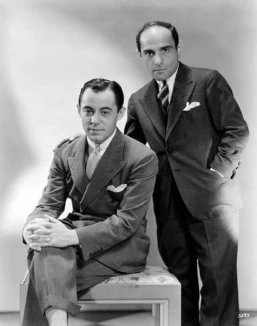

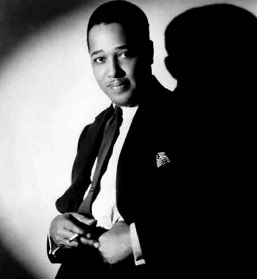


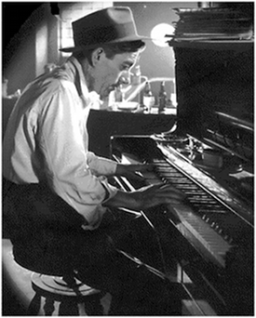
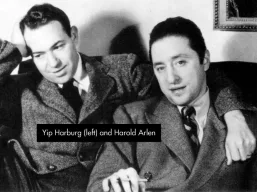




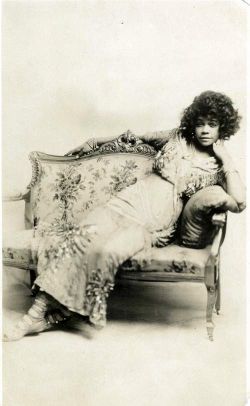










Mar 28, 2014 @ 08:35:11
Thank you!
LikeLike
Mar 24, 2017 @ 17:01:18
From someone who saw these wonderful gentleman live on a couple occasions, thank you
LikeLike
Mar 25, 2017 @ 23:58:42
Anon,
You’re welcome.
LikeLike